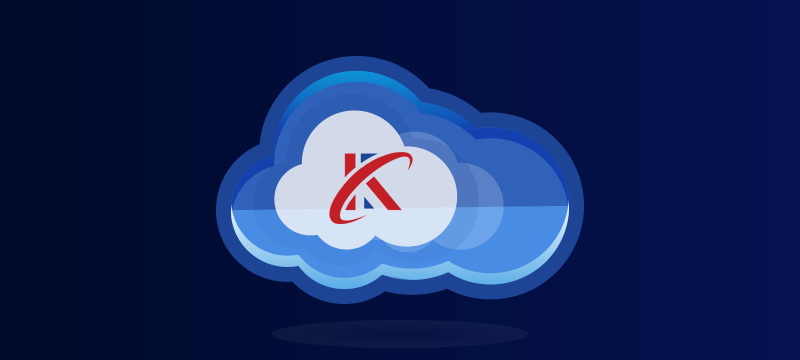As the new year gets underway, industry experts invariably start discussing what they think will be the major trends in cloud computing in the following twelve months. As a cloud service provider, we are always eager to see what these predictions are and, in this post, we are sharing them with you. Here are the top cloud trends predicted for 2023.
Growing adoption of hybrid cloud
Increases in data theft and ever stricter data protection regulations mean companies have to do more to keep their data secure. While the public cloud is highly secure and enables data to be encrypted both in transit and at rest, experts predict that more companies will enhance security by opting for hybrid cloud infrastructure in 2023. They forecast that global spending on hybrid cloud will triple from £40 billion in 2020 to £120 billion by 2026.
In a hybrid cloud, applications are hosted in the public cloud while personal and sensitive data is stored in a private cloud. The private cloud’s virtual servers are not housed on shared, multi-tenancy hardware, like in the public cloud, but on single-tenancy machines reserved solely for the use of one company, thus making them more compliant with regulations.
Cloud-based AI and ML
Artificial intelligence and machine learning are highly powerful tools that can transform how businesses operate. Today, they can be used across all sectors and in virtually every area of operation, from improving and automating manufacturing processes to predicting customer behaviours and product lifecycles.
As digital transformation is driving more businesses to adopt AI and ML, companies will increasingly be doing so in the cloud. With AI and ML applications needing large amounts of data, bandwidth and processing resources, running them in-house requires capital investment that many companies lack. Running them in the cloud, however, requires no capital investment as the infrastructure is supplied by the service provider for a manageable monthly fee. Additionally, setting up in the cloud is significantly faster, provides 100% availability and offers instant and virtually unlimited scalability when extra resources are required.
Edge computing for IoT businesses
As more businesses start to make use of IoT devices, whether for customer or employee use, 2023 will see increased adoption of edge computing. Edge computing’s distributed architecture works by processing data as near as possible to its source. In doing so, it cuts down the amount of processing needed in the data centre, reducing cloud costs and, at the same time, reducing latency, enabling IoT devices to be controlled faster. It also improved data security as less data is transmitted.
Managed cloud solutions
With IT expertise being in short supply and costly to employ, businesses need to make sure that their IT teams spend their time effectively, working on projects that are going to be beneficial to the growth of the company and not carrying out day-to-day admin and management tasks.
A managed cloud solution can easily resolve this, and experts predict that more organisations will migrate to a managed cloud provider in 2023. With managed cloud hosting at Webhosting UK, for example, our server admin engineers take care of tasks such as system monitoring and maintenance, and in doing so, we can guarantee 100% uptime SLA, optimised performance, reliability and easy scaling. You’ll also get 24/7 expert technical support.
Desktop as a Service (DaaS)
As many envisaged, following the pandemic, partial or full-time remote working has become the norm for millions of workers. As a result, in 2023 we are likely to see more businesses making use of desktop as a service (DaaS). This is a cloud-based service that provides users with a virtual PC, including the operating system and applications, which can be accessed on desktops, laptops and other devices, both remotely and in the office. These services provide all the apps that businesses need over a secure network and a charged for on a per-use basis.
Secure Access Service Edge (SASE)
While cloud vendors invest in expertise and next-gen security tools to defend their customers’ systems, some of the biggest threats occur in the network beyond the data centre. With cybercrime continuing to escalate, 2023 will see more cloud-based companies make use of Secure Access Service Edge. SASE brings a range of cloud-native security technologies together to protect the wide area network (WAN). It does this by securely connecting applications and services to users, systems and devices wherever they might be.
Cloud-based disaster recovery
IT disasters can have catastrophic consequences for companies, putting some out of business. The key to survival is the speed at which they can recover and the point to which they can recover from – what are known as recovery time and recovery point objectives.
Cloud-based disaster recovery has been around for some time but is expected to take off considerably this year as it provides businesses with the most effective way to meet recovery time and point objectives. Backups can be scheduled to take place at the frequency needed for recovery point demands, and restoration of data, apps and systems can be done at speed, even quicker if it is restoring from a cloud backup to a cloud server. At the same time, the backups can be encrypted for security, checked for integrity and accessed remotely.
Conclusion
2023 will see businesses continue to expand and diversify their cloud usage. They will increasingly adopt advanced technologies like ML, AI and edge computing, and make use of evolving services, like SASE, cloud-based backups, DaaS and managed cloud solutions. For more information about our managed cloud solutions, visit our Enterprise Cloud Server Hosting page.


